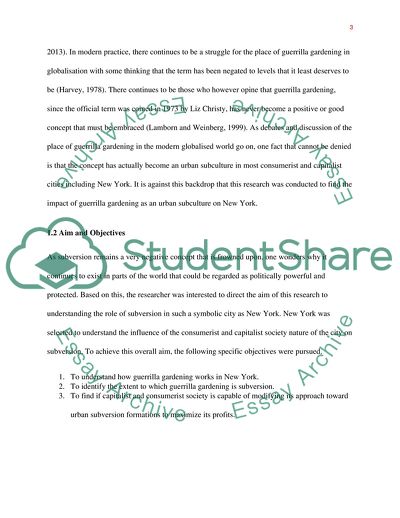Cite this document
(How Urban Subculture and More Especially Guerrilla Gardening Research Paper, n.d.)
How Urban Subculture and More Especially Guerrilla Gardening Research Paper. https://studentshare.org/social-science/1827941-how-subculture-and-more-especially-guerrilla-gardening-constitute-the-trojan-horse-of-consumerist-and-capitalist-society-in-new-york-city
How Urban Subculture and More Especially Guerrilla Gardening Research Paper. https://studentshare.org/social-science/1827941-how-subculture-and-more-especially-guerrilla-gardening-constitute-the-trojan-horse-of-consumerist-and-capitalist-society-in-new-york-city
(How Urban Subculture and More Especially Guerrilla Gardening Research Paper)
How Urban Subculture and More Especially Guerrilla Gardening Research Paper. https://studentshare.org/social-science/1827941-how-subculture-and-more-especially-guerrilla-gardening-constitute-the-trojan-horse-of-consumerist-and-capitalist-society-in-new-york-city.
How Urban Subculture and More Especially Guerrilla Gardening Research Paper. https://studentshare.org/social-science/1827941-how-subculture-and-more-especially-guerrilla-gardening-constitute-the-trojan-horse-of-consumerist-and-capitalist-society-in-new-york-city.
“How Urban Subculture and More Especially Guerrilla Gardening Research Paper”. https://studentshare.org/social-science/1827941-how-subculture-and-more-especially-guerrilla-gardening-constitute-the-trojan-horse-of-consumerist-and-capitalist-society-in-new-york-city.


